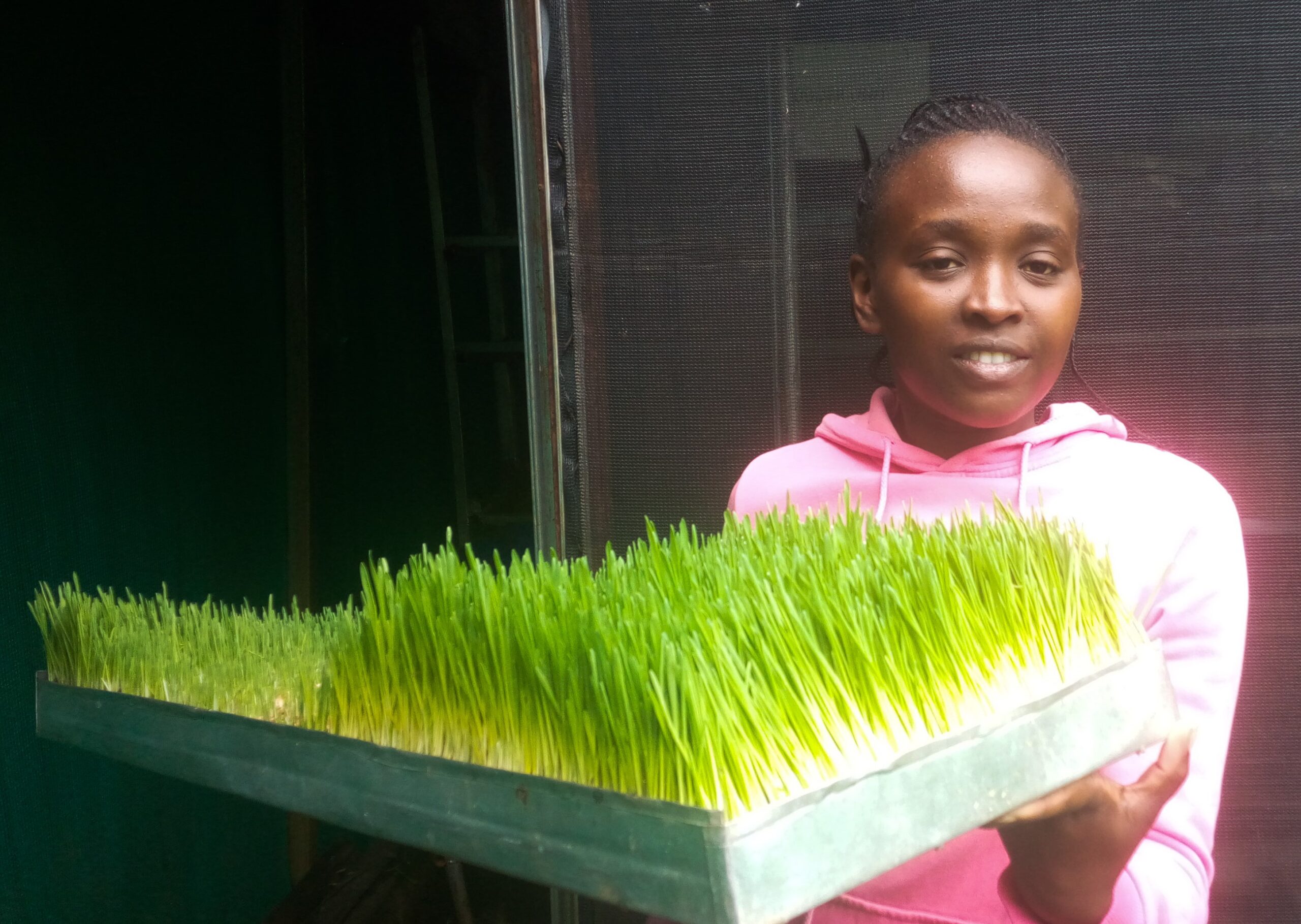With efforts to produce highly nutritious green fodder for both livestock and poultry, farmers and those interested in venturing into fodder production have been challenged to maximize the hydroponic farming technique.
Speaking to KNA, Mary Wanja who is an administrator and hydroponics trainer at Hydroponics Africa in Zambezi area in Muguga ward, said that utilizing this modern method to grow green fodder for animals was more advantageous to both the farmer and livestock consuming it due to the nutritional value.
“When using the hydroponic method, there is no use of soil and chemicals rather fortified fodder seeds, water and absorbable nutrients which reduces the readiness period from 12 weeks if grown conventionally to a maximum of 4 to 7 days depending on which animal the fodder is to be fed,” Wanja explained.
“The duration to fodder readiness varies. If it is grown to feed poultry, the maturity time is 4 days, for sheep, goats, pigs takes 6 days while that for feeding cattle and camels takes 7 days before it is cut into pieces which are easily fed to the respective animal,” she added.
Green fodder, Wanja adds, has a high level of carbohydrates, minerals and vitamins which are easily broken down in the respective herbivorous animal digestive system with ease which is due to the process of germination where all devised nutrients put in the water are all absorbed.
She added that producing fodder the hydroponic way saves a number of costs including water as the system has a drainage where all the excess water is collected and reused, while little space is required in setting up the structure and reduced labour work as there are no weeds, pests and diseases.
“In the smallest space, an individual owns for instance 1 meter (width) by 2 meter (length) by 3 meters (height), the hydroponic fodder system can hold up to 21 trays which can feed 3 cows in a day as one cow requires at least 7 trays to be considered well fed,” Wanja shared.
As Wanja explained to KNA, the structure doesn’t use electricity while on the other hand no wastage of produce is experienced by a farmer as the animal consumes everything including roots and leaves of the green fodder.
Scaling to equip farmers and those interested in acquiring knowledge about fodder production using hydroponics, the Founder Dr Peter Chege said that setting up workshops and training has been core to them in efforts to reduce the information gap in the area of animal feeds farming since their inception in 2013.
“We dedicate ourselves to train at very affordable rates and so far, we have conducted a lot of trainings for individual farmers, youths, groups not only here in Muguga ward but also nationwide and within East Africa region where we have also assisted them in installation of the simple system for them to monitor progress each day while we continue offering our agronomy services for free,” said Dr. Chege.
As per the Hydroponic Performance Evaluation report (2019), this farming technique reduces the environmental problems caused by conventional way of farming while also attractive to be done by youths, hence, Dr Chege urged young people to be aggressive in grasping the technique and executing it for commercial purposes to other farmers.
“Going the hydroponic lane is the simplest way to produce healthy feeds for animals as there are no fungus or pathogens due to chemically treated trays with the systems’ temperature and humidity controlled making it easy to produce fodder all year round with sunshine or rain nor being a factor,” said Dr Chege.
According to the Food and Agriculture Organization (FAO), green fodder is highly digestible and nutritious when given to dairy cows as it is a huge booster to milk production with minimal environmental impact though it needs proper maintenance for sustainability.


